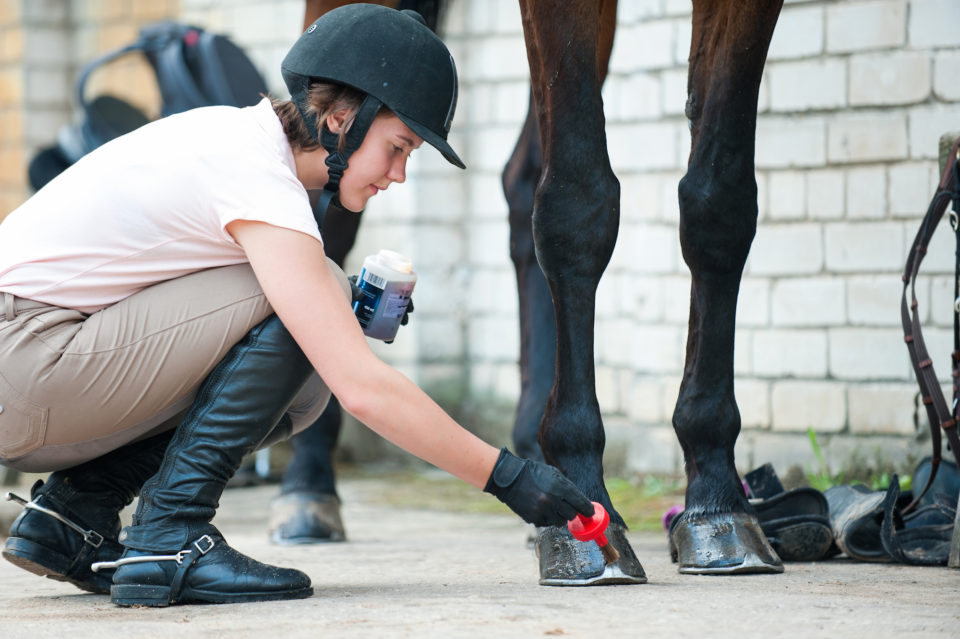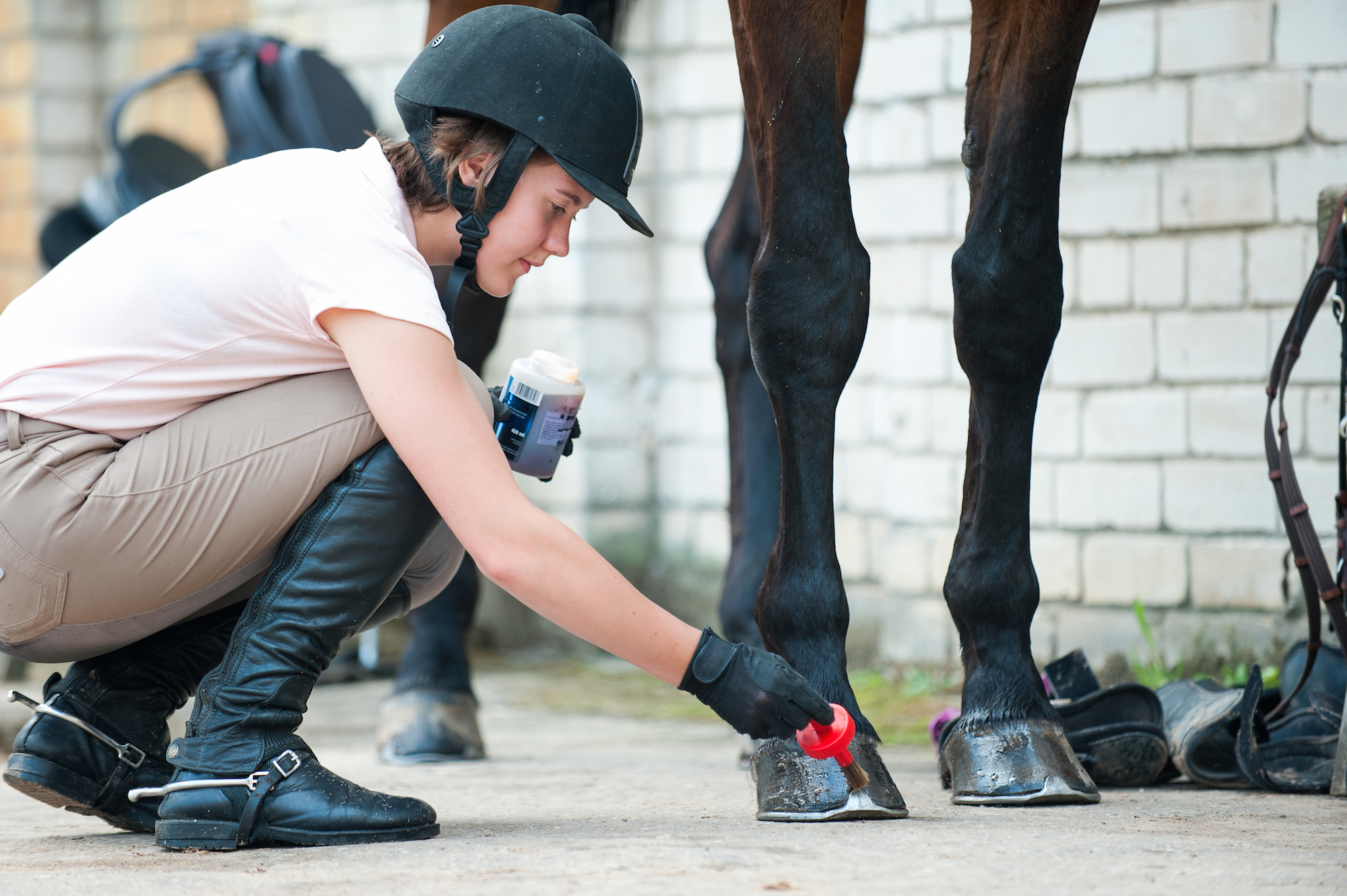
Does your horse hate being groomed? Does it flinch and try to evade the curry comb? You may have a horse that’s ultra sensitive to grooming, which calls for a different approach…
Here are seven tips to make grooming sessions more pleasurable and effective when working with a sensitive horse.
Check for Injuries
First, you want to determine if your horse is truly more sensitive to touch or if there is an underlying injury that should be addressed that is causing some temporary discomfort.
Sometimes there can be chafing from an ill-fitting saddle or tack that causes the horse to believe that anything that touches it will cause pain.
However, some horses are genuinely more sensitive. Horses with thinner coats and thinner skin are often more responsive to pressure.
Low body weight horses may also show more sensitivity, as there is less fat or muscle tissue covering bony areas.
Horses that have been trained harshly or abused may have developed a lifelong fear of being groomed if they associate it with feeling bad.
This may require both care in the grooming process, as well as some work with a behaviourist who can help you undo some undesirable reflexive responses to touch. Develop a
lighter touch
Create a Calm Atmosphere
Horses that are prone to drama or easy spooking relax more when groomed in a tranquil environment.
If the cross ties in the middle of a busy stables makes your horse too jumpy, try a quieter corner or grooming in the horse’s stall.
Under a tree in the pasture may also be a nice spot to work. Humming or playing soft music can contribute to the calm atmosphere you want.
Some horses let down their guard more easily with the smell of lavender. A few drops of natural lavender essential oil on your hands, as long as your horse is not allergic, can further add to the ambiance you want to create.
Start with the Right Tools
Horses that have physical sensitivity to grooming do better when some attention is given to their grooming tools.
The same brushes and scrapers that work just fine on other horses may feel too harsh to the sensitive horse, so you may need a special soft-touch grooming kit, including:
- Softer brushes and curry combs
- Cactus cloth
- Grooming gloves or mitts
- Rubber and flexible tools (versus metal)
- Tools that attach directly to a hose
Try bristles on your hand first, and look for brushes that aren’t too stiff. You may need a few more strokes to get the same effect, but it will be worth it if your horse comes to love your grooming sessions together.
Spooky horses are frequently put off by spray bottles. If you need to use a product that comes in spray form, try applying it to your gloved hand first, then rubbing it in gently to spread it.
Adjust Your Touch
The same vigorous rubbing technique that most horses love can make a sensitive horse want to jump out of its skin!
Therefore, you will need to develop a lighter touch when working with a sensitive horse. Make sure anyone else who works with your horse adopts the same accommodation.
Experiment to see how much pressure you can apply before your horse tells you it’s too much.
Most sensitive horses have areas of the body that are more reactive than others. You may be fine giving the back a good brisk currying, but the shoulders require more finesse.
If some of your horse’s sensitivity is due to general nervousness, let your horse see and smell any grooming tools before you apply them.
Also, try to work in the same order with every grooming session, so your horse comes to know what to expect, which assuages anxiety.

Distract or Reward with Treats
If you only have a few places where your horse is particularly sensitive, distracting with a few treats may let you get through the worst of it.
Some horses will also stand quietly if they know they’ll be rewarded with a peppermint or cookie once their face and forelock are cleaned and brushed.
Just don’t let your horse become too pushy about demanding treats or you’ll have created another problem on top of grooming sensitivity.
Add a Massage
One of the best ways to introduce anything your horse perceives as negative is to associate something more pleasant with it.
The natural complement to a grooming session is an equine massage.
As a professional massage is not feasible with each and every grooming session, ask a massage therapist for a few relaxing techniques you can use to help soothe your horse.
You can use your bare hands or grooming gloves or mitts that let you combine massage strokes with currying your horse. These tools give you a much better sense of how much pressure you are transmitting to the horse as well.
Quit While You’re Ahead
Finally, know the signs when your horse has had enough.
Especially if you are just starting out with a new agenda of improving tolerance for grooming, your horse may want to quit halfway through.
Watch for a swishing tail, pinned ears, or twitching when you touch the horse’s body, and come back for another session later.
Before you know it, your horse will trust you not to hurt it, and you’ll be able to enjoy longer stretches of brushing and combing together.
Text by Patricia Salem
https://www.fei.org/stories/lifestyle/teach-me/seven-tips-grooming-sensitive-horses



